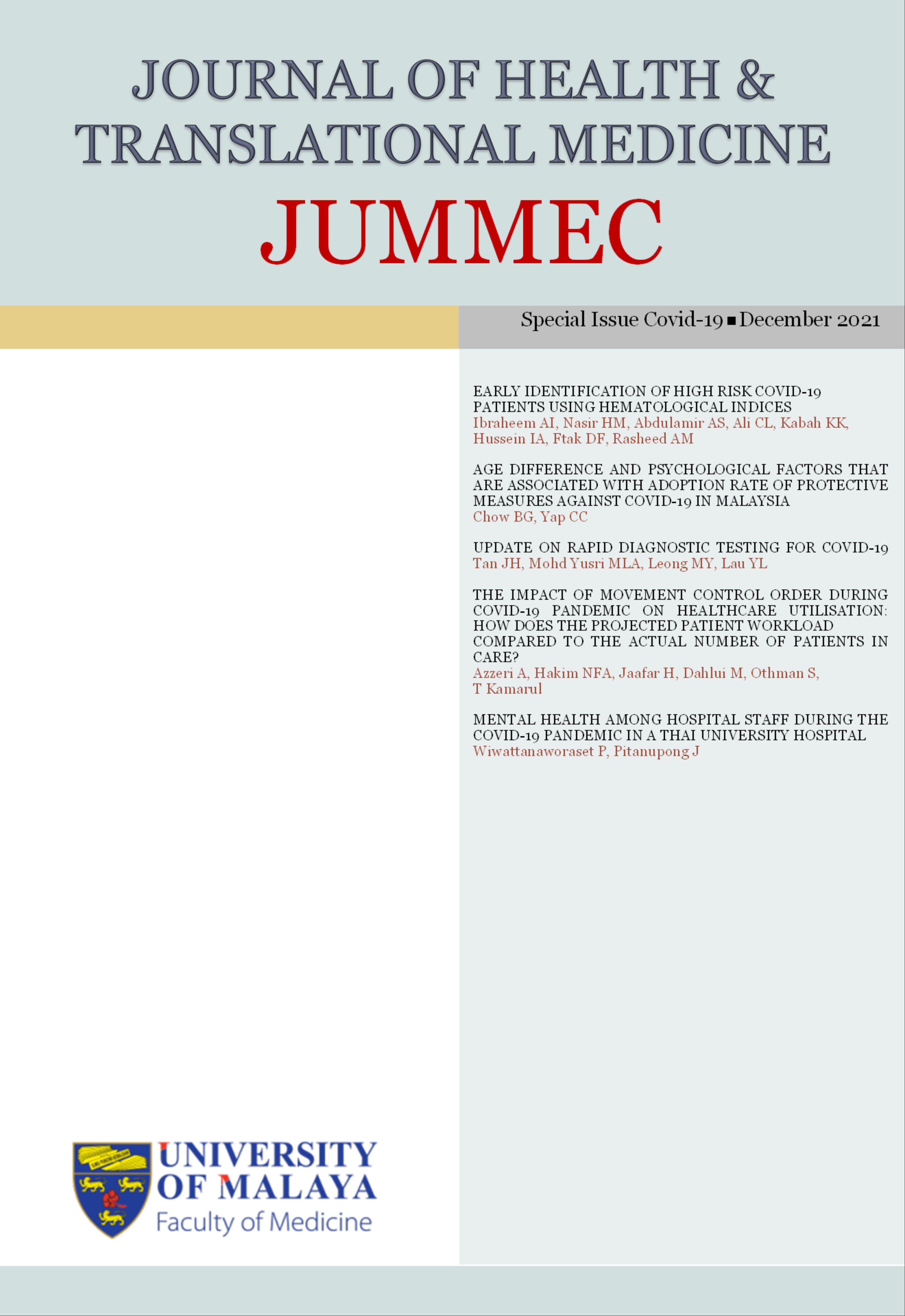EARLY IDENTIFICATION OF HIGH RISK COVID-19 PATIENTS USING HEMATOLOGICAL INDICES
Received 2020-09-23; Accepted 2021-03-09; Published 2021-08-08
DOI:
https://doi.org/10.22452/jummec.sp2021no1.1Keywords:
COVID-19, Coronavirus, cytokine storm, ARDS, complete blood count, CBCAbstract
Coronavirus disease 2019 (COVID-19) is a recent respiratory infection caused by the severe acute respiratory syndrome coronavirus 2 (SARS-CoV-2) with serious complications, severe acute respiratory syndrome (ARDS), cytokine storm, and coagulopathies. Complete blood count (CBC) is a routine inexpensive and easy test that provides information regarding formed blood content such as white blood cells (WBC), platelet, neutrophil-lymphocyte ratio (NLR), platelet-lymphocyte ratio (PLR) and lymphocyte-monocyte ratio (LMR) to detect degree of inflammation. This study attempts to assess, at an early phase of the disease, the prognosis of COVID-19 patients and predict high risk patients who will most probably develop ARDS and cytokine storm by analyzing blood cells count. This study is a single-center case series on COVID‐19 patients who were prospectively analyzed at Al-Furat General Hospital in Baghdad from March to August 2020. Up to 123 Covid-19 patients in two groups, 100 who survived versus 23 who did not survive were included. Patients with abnormal renal and hepatic tests were excluded. Results revealed that the median age of patients was 40 years, ranging from 2-84 years of age. Males (61.8%) were more affected by COVID-19 than females (38.2%). Survived patients exhibited far lowered WBC count (6.06±3.17) than non-survived patients (11.4±6.08; p<0.0001). Lymphocyte count in survived patients (1.6±1.1) were higher than non-survived patients (1.1±0.4; p<0.004). Neutrophils showed lower count (3.7±2.7) in survived patients than non-survived patients (8.9±4.5). Also, receiver operator characteristic (ROC) analysis for NLR, LMR and PLR revealed a cut off value for abnormally high or low NLR >5, LMR ≤1.8, and PLR >176 with area under curve (AUC) 0.9, 0.8, and 0.6, respectively. These cut off values represent landmarks above or below which poor prognosis and non-survival is highly predicted. NLR was found to be the most prognostic index to detect bad prognosis and non-survival of the disease at 90% sensitivity, followed by LMR and then PLR. The percentage of non-survived patients who had abnormally high NLR (82.6%), LMR (65.2%) and PLR (56.5%) were far higher than survived patients (NLR: 9%; LMR: 8%; PLR: 22%).
Downloads
Downloads
Published
Issue
Section
License
All authors agree that the article, if editorially accepted for publication, shall be licensed under the Creative Commons Attribution License 4.0 to allow others to freely access, copy and use research provided the author is correctly attributed, unless otherwise stated. All articles are available online without charge or other barriers to access. However, anyone wishing to reproduce large quantities of an article (250+) should inform the publisher. Any opinion expressed in the articles are those of the authors and do not reflect that of the University of Malaya, 50603 Kuala Lumpur, Malaysia.


